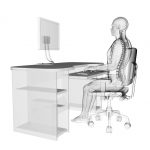Can You Take Advantage of Construction Stormwater Permit Waivers?
Two Conditions Under Which You May Not Need a Permit The U.S. Environmental Protection Agency (EPA) or your state may waive applicable requirements in a permit for a stormwater discharge from construction activities that disturb fewer than 5 acres. The intent of the waivers is to waive only sites that are highly unlikely to have […]










